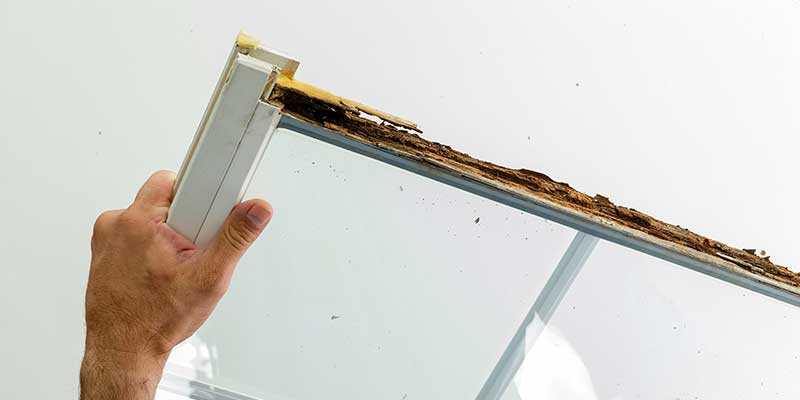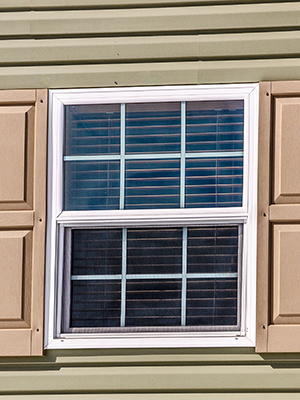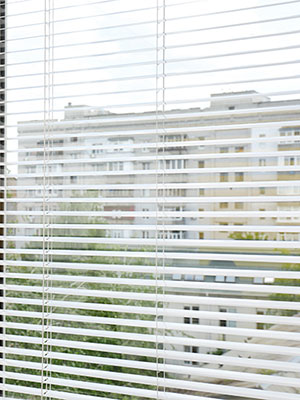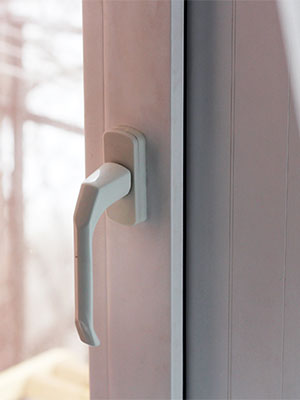Why Are My Windows Rotted?
When the term “rotting” is associated with any part of your home, you know it’s a cause for concern. As a homeowner, you know that rotting, when it sets in, must be removed as soon as it’s spotted.

Otherwise, the fix can get expensive, and mold can quickly take over your home.
Where Windows Rot
Windows can rot on the sill. Water seeps down the wall, causing mold and water damage to the wall, window frame, and collecting at the sill. The sill should be examined and touched to see if the wood feels soft or looks rotted.
Many people don’t realize that windows are also prone to rotting on the outside trim and brick mold. The outside trim acts as an additional layer of protection for the frame and will, but it’s also the first to see the rot in most cases. Fortunately, the outside trim is easy to fix or replace, unlike the other components of the window.
The window frame is difficult to fix if it’s rotted. Rotted frames will often feel soft and look discolored. You may also notice staining around the walls. Typically, it’s best to call in the professionals to replace and fix your rotted window frames.
Don’t forget about the sash. If the sash is rotted, the window won’t be functioning smoothly. The sash is responsible for allowing the window to move up and down. Moisture and rot will warp the sash, especially if the material is wood.
The Cause Behind Rotting Windows
Rotting is a result of the presence of moisture. Homeowners know that when moisture exists, pooling in one place, problems are to follow. Moisture can wreak havoc on a home’s structure—weakening it, dismantling its integrity, even though minuscule droplets of water, and if given enough time, cause rot, which allows these issues to persist and worsen.
Your windows are a vulnerable part of your house. They open up to the elements, freely allowing the outside to get in. Good windows have the ability to seal when closed, wicking away moisture to prevent rotting. But if you’re one of the thousands of homeowners with an older home with equally old windows, you’re not so lucky. Even when your windows are shut, moisture finds a way to dribble, leak, and seep inside.
However, a rotted window isn’t always the result of an older, poorly functioning window. Water always takes the easiest route with the least amount of obstruction in its path. For your home, this could mean that the water is finding its way toward your window through other openings, like in the wall structure or your roof. Sometimes, the window itself isn’t always to blame.
Wood window frames are quite popular, and this is when rotting becomes a prevalent problem. The wood absorbs the moisture, but it doesn’t hold it well. Have you ever touched a rotted piece of wood? It’s soft and malleable. It should feel dense and hard. If a spongy feeling is an accurate description of your windowsill, window frame, or surrounding wood trim of your windows, then you’ll know that rot has set it. Now, it’s time to fix it.
What to Do About Your Rotted Windows
If left untreated, rotted windows can grow mold, and mold can incite health problems for the occupants of the house. Not only that, but mold is also detrimental to the structure of the home as well. The rot can spread over time, which means more damage across the house and the structure.
You’ll need to face the facts: a rotted window needs to be replaced. There are two main types of window replacements: full-frame tear-out or retrofit insert. A retrofit replacement will replace the window into the existing frame. A full-frame replacement involves the window being entirely removed, along with its components, and replaced with a brand new window, jambs, brick molds, and casings.
Moisture damage spreads like a disease. It infects the surrounding areas, seeps into the structure, and inflicts structural harm on anything it can touch for a good amount of time. Logical thinking strongly suggests one type of window replacement—full-frame.
Similar to a gut job, a full-frame replacement will remove the moisture-ridden parts of the window and rotted areas with new components. You’re giving your windows, your home, and its structure a second chance. Don’t let a window company or contractor talk you into a retrofit replacement if your windows are suffering from rot. Otherwise, the rot will surely spread back into your new, windows in no time at all, circling you back to the same problems you had before. The entirety of the rot must be removed.
A full-frame replacement is more expensive because you’re paying for a larger removal and installation process with all-new parts, but in the long run, you won’t be paying for windows twice. Another perk is that you’ll also be getting a warranty with your new windows. Should the moisture problems, rotting, or any other issues arise within the first few years of the new windows’ replacement, you’ll be covered.






